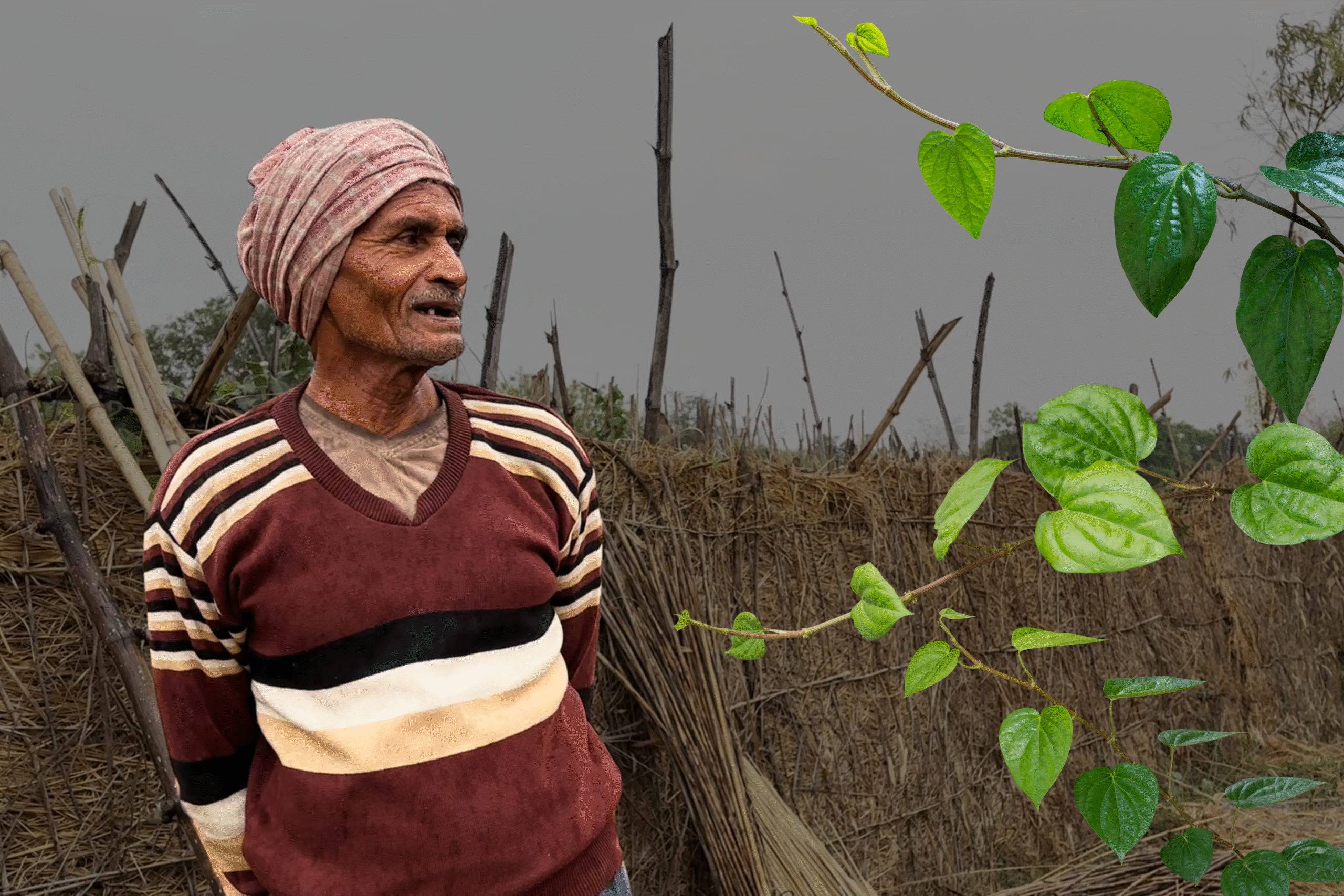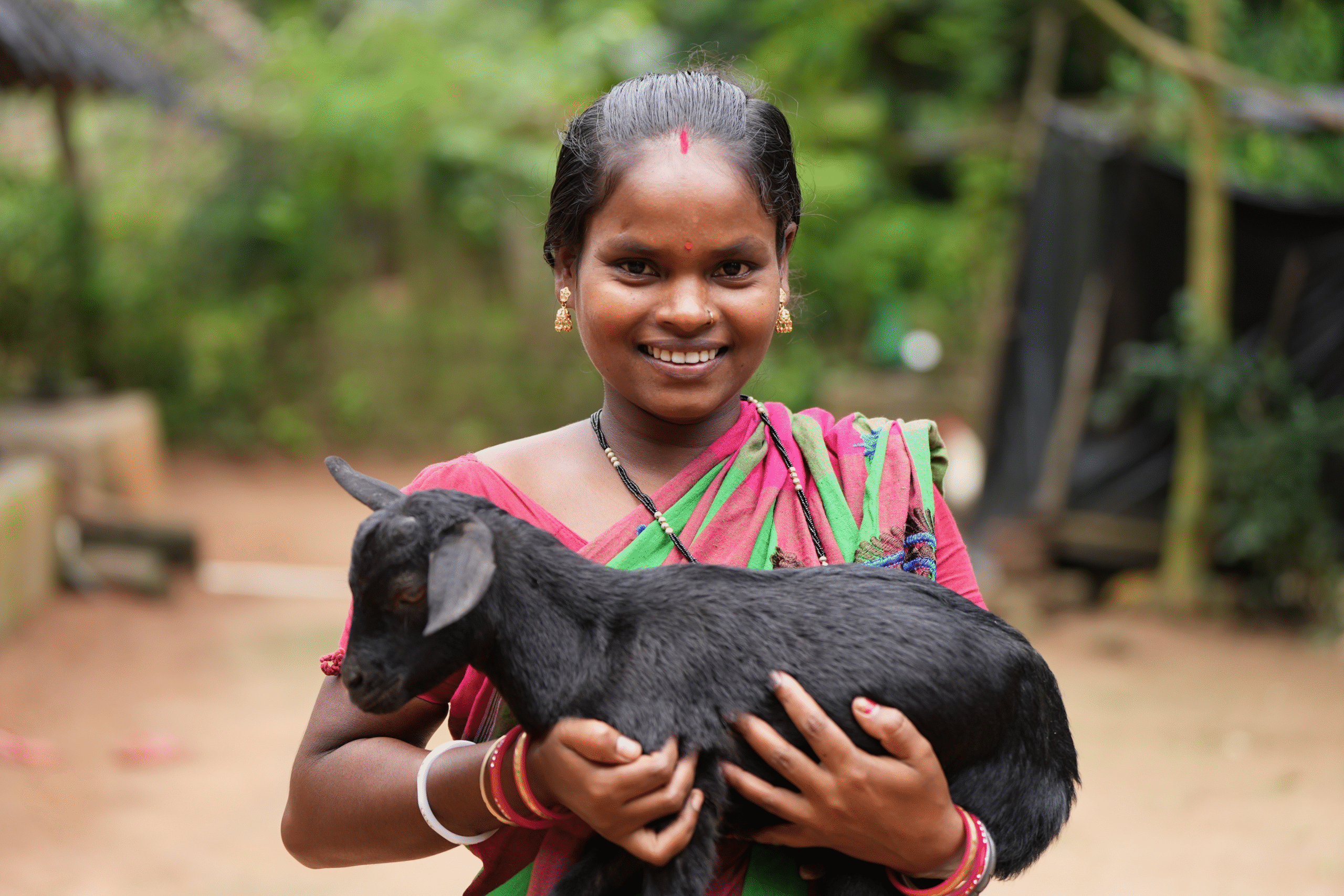Much to the delight of the wildlife lovers and researchers, on the breezy night of March 25, beaches of small islands in Odisha’s Gahirmatha Marine Sanctuary witnessed record number of nesting by more than 200,000 Olive ridley turtles. So far, an estimated half a million turtles have already laid eggs on these islands with a week still left for the annual nesting event.
The population of these turtles is on a decline and the species is categorised as endangered which makes the record nesting a milestone for the conservators.
“A record number of 245,188 Olive Ridley sea turtles came ashore for mass-nesting at the Nasi-1 and Nasi-2 islands of Gahirmatha Marine Sanctuary which is situated inside the Bhitarkanika National Park on March 25 evening for arribada (Spanish term for the mass nesting),” Jagyandatt Pati, Divisional Forest Officer of the Bhitarkanika National Park told Gaon Connection.
“We are more delighted that for the first time on a single day more than 200,000 turtles laid eggs at Gahirmatha. On 26th March night, 1,84,994 and 27th March 64,958 turtles also laid eggs.
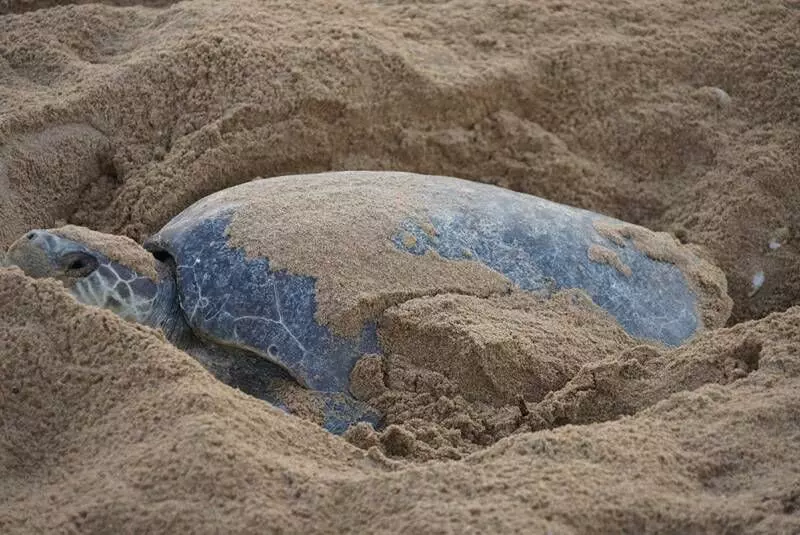
The turtle eggs usually take 45 days to hatch. Photo by Ashis Senapati
“In the following days, more turtles arrived to lay eggs on the beach. The arrival of more than 300,000 turtles within two days reflects decades of conservation effort since sea turtles were put on the endangered species list and declared as a Schedule – 1 animal at par with tiger and elephant in the Wildlife Protection Act, 1972,” the official added.
According to the official website of the World Wildlife Fund (WWF), the coast of Odisha is the largest mass nesting site of these turtles, followed by the coasts of Mexico and Costa Rica. It also mentions that the Olive ridley turtles are the smallest and most abundant of all sea turtles found in the world, inhabiting warm waters of the Pacific, Atlantic and Indian oceans.
“Growing to about 2 feet in length, and 50 kg in weight, the Olive ridley gets its name from its olive colored carapace, which is heart-shaped and rounded. Males and females grow to the same size; however, females have a slightly more rounded carapace as compared to the male. They are carnivores, and feed mainly on jellyfish, shrimp, snails, crabs, molluscs and a variety of fish and their eggs,” WWF mentions on its website.
“These turtles spend their entire lives in the ocean, and migrate thousands of kilometres between feeding and mating grounds in the course of a year,” it states further.
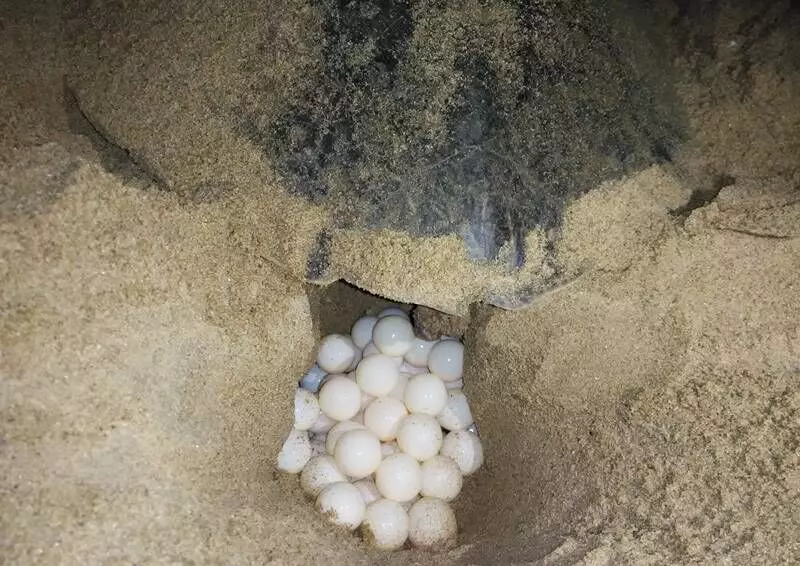
The coast of Odisha is the largest mass nesting site of these turtles around the world.
Secluded islands perfect location for nesting
Nasi-1 and Nasi-2 are two tiny islands stretching almost five kilometres but these small strips of land in the midst of the blue waters of the Bay of Bengal provide the ideal conditions for these turtles to lay their eggs as there are no predators or human habitation on these islands.
The turtle eggs usually take 45 days to hatch. “After this span of time tiny hatchlings come out and make their way to the sea,” the forest officer informed Gaon Connection.
It is learnt that the forest department imposed a seven-month long fishing ban’ from November 1 to May 31 to protect the endangeredOlive ridley sea turtles in the Gahirmatha marine sanctuary.
The official also informed that about 30 forest officials including forest guards are presently tasked with guarding the nesting beach and the sea to protect the turtles and their eggs. This rookery at Gahirmatha was declared a marine sanctuary covering 1,435 square kilometres in 1997 by the government to protect the endangered turtles.
However, the forest official underlined that bright light from the missile testing range at APJ Abdul Kalam island near the Gahirmatha had been an impediment for the arrival of the turtles.
“But this year the defence officials of Missile Test Range put off the lights as a mass-nesting of the turtles has started in the Gahirmatha beach,” he told Gaon Connection.
Coordinated effort to conserve Olive ridley
The coastal waters off Devi and Rushikulya rookery are declared as a no-fishing zone during the sea turtle breeding season under the Odisha Marine Fisheries Regulation Act (OMFRA), 1982 and Odisha Marine Fisheries Regulation Rules, 1983 and the Indian Coast Guard is empowered to enforce the provisions of the Act.
Hemant Rout, an environmentalist and the secretary of Gahirmatha Marine Turtles and Mangrove Conservation Society (MTMCS) told Gaon Connection that despite the efforts to protect the turtles, a large number of these reptiles are being killed as the fishing trawlers are not using turtle excluder device (TED).
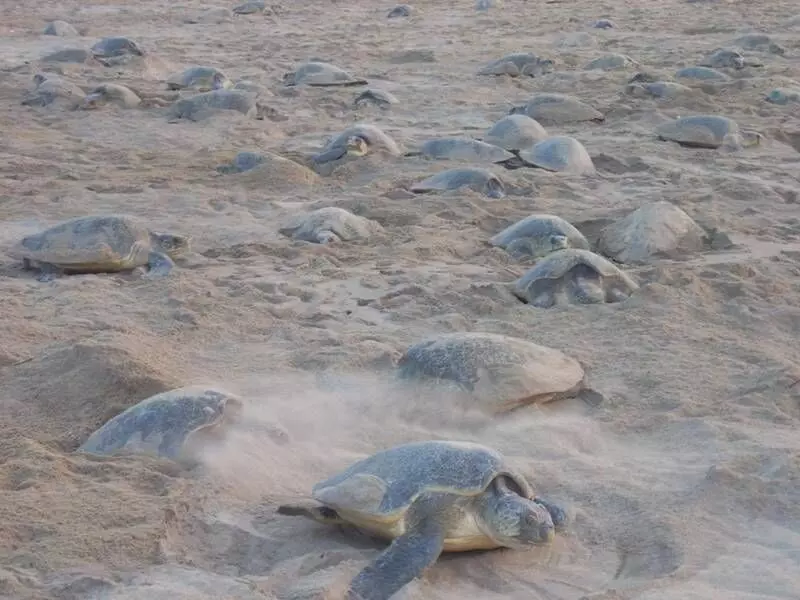
These small strips of land in the midst of the blue waters of the Bay of Bengal provide the ideal conditions for these turtles to lay their eggs as there are no predators or human habitation on these islands.
“Thirteen years back, the forest department had distributed free of cost 1,800 TEDs to all the trawler owners to use the turtle protection device but rarely was any fisher using the device,” Rout said.
TEDs are specially designed nets with an exit cover which allows the turtles to escape while retaining the catch.
“However, this has been strongly opposed by the fishing communities as they believe TEDs result in loss of considerable amount of the catch along with the turtle,” WWF mentioned on its website.
“WWF-India, along with its partners, disproved this theory by conducting a study to measure the loss of catch through TEDs, revealing the loss to be a very small percentage of the total catch. This result, along with regular meetings with the fishing communities, is slowly helping to change their mindset and encourage use of TEDs, thereby aiding the conservation of Olive ridley turtles,” it added.


